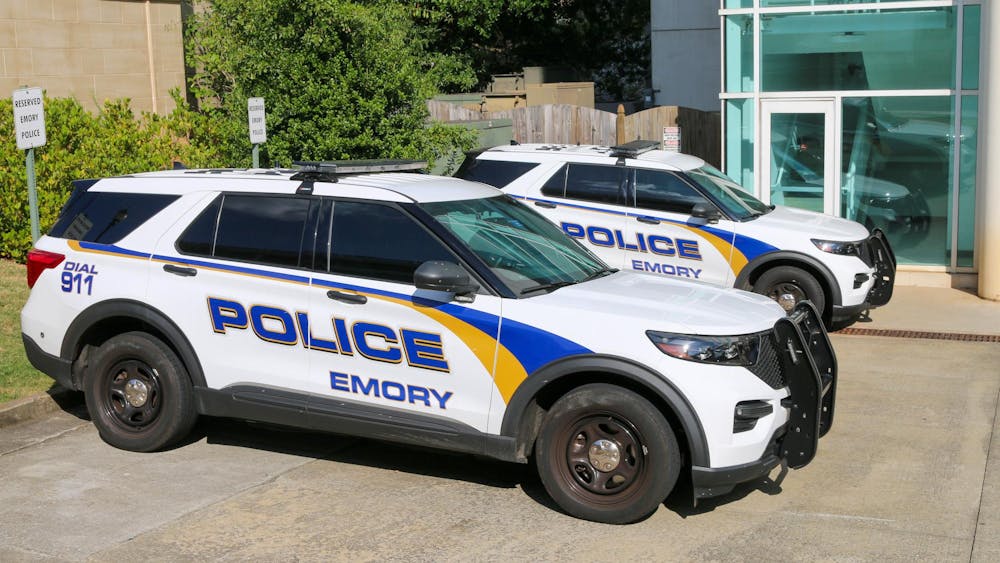
Last semester, I was in a car accident with my friends. What started as a late-night ice cream run to Andy’s Frozen Custard ended with two totaled cars and a near-death experience that would bond us for the rest of our lives. Thankfully, everyone involved was fine — except for my roommate’s car, which we’d named Shawn Mendes. We were driving on North Druid Hills Road, a prime example of a stroad — the combination of a street and a road.
In essence, a stroad places the high-speed infrastructure of a highway road in the complexity and population of residential and commercial streets. Stroads are a huge sustainability issue as well as a safety concern. As an institution that touts its environmental goals, Emory University is neglecting the implications of a highway running across it like a carbon-emitting gash. Clifton Road is not only a stroad but also an environmental Godzilla that students and staff face daily, and it needs to be dealt with.
Clifton Road is perhaps the most prominent stroad that Emory students and staff interact with regularly. The quick prayer you say before looking both ways and running across the street to the Woodruff Residential Center, the awkward game of eye contact and nervous nods you play with drivers leaving the hospital parking lot and the confusing bike lanes that disappear at the worst times are all characteristics of a stroad that enables danger and slow traffic.
I conducted a survey through the Goizueta Business School class Legal Environment of Business, gathering student sentiment regarding Clifton Road. Only BBA students from the class had access to the survey, in which roughly 16% and 33% of respondents said that they didn’t feel safe walking and biking on Clifton Road, respectively. In addition, around 42% of students surveyed claim that Clifton Road heavily impacts their ability to get around campus due to traffic. As the main road, sitting in traffic on Clifton significantly increases the greenhouse gas emissions around Emory.
Beyond sustainability reasons, Clifton Road effectively divides campus and, as Kira Eng wrote in a previous Wheel article, “cultivates a divide between students who live on the west side of Clifton and students who live off campus or on the Clairmont campus.” Since moving into third- and fourth-year housing on the Clairmont campus, I can count the number of on-campus events I have been to on one hand — zero. The separation Clifton causes deeply affects the average Emory student’s campus involvement. Without a car, traveling to the main campus is nothing short of a hassle. The survey shows that almost 50% of students will choose not to bike or walk Clifton Road due to safety concerns or difficulty crossing. Shuttles are inconsistent and slow. There is nothing more aggravating than a long day of classes and waiting 15 minutes for a C route shuttle only to see three pull into the roundabout at the same time.
Various committees on campus work on the improvement of student life and university operations, including the University Senate Committee on the Environment, which is composed of faculty from all across campus. The official purpose of the committee is “to formulate a broad ecological understanding of the Emory environment” and to research and “evaluate environmental issues” in order to recommend action steps.
The most important reason for the committee to focus on Clifton is the safety of Emory’s workers and students. A stroad emphasizes speed and cars over the people who live on and commute through it. In our case, what could have been merely a broken taillight instead resulted in police, tow trucks and a trip to the hospital. Stroads misapply highway building techniques to our local streets, leading to a false sense of security. Drivers feel empowered to drive at high speeds, putting pedestrians and alternative commuters at risk. This was well-reflected in the survey, in which roughly 25% of students said they drive above the speed limit on Clifton Road.
An interesting method of redesigning stroads to be safer is implementing a “road diet.” According to this model, instead of four-lane roads, one lane from each side is replaced with a bike lane and in the middle is a shared lane for turns. A study done on 15 streets in the state of Iowa showed a 47% decrease in total crashes after implementing a road diet. In Indiana, cities have adopted roundabouts to increase the safety of roads, reducing injury crashes by 47% and removing 5,000 cars worth of carbon dioxide from idling.
Whatever the method, Clifton Road is a dangerous stroad that should be one of the top priorities of the Senate committee. Not only would improving Clifton Road provide sustainability merit, it would drastically improve the experience of all Emory community members in a safer and more fulfilling way.
Neil Cao (24B) is from Queens, N.Y.









